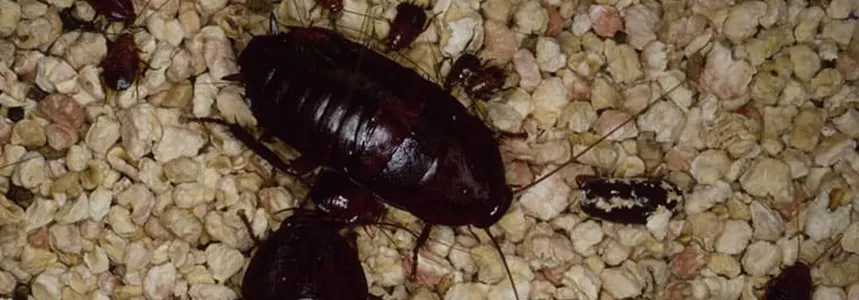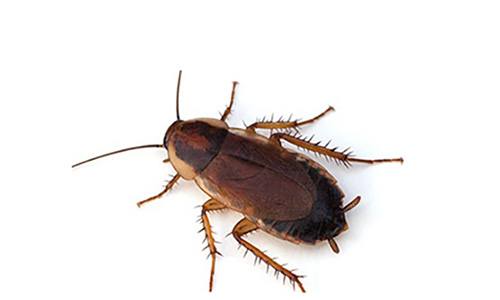
How to Get Rid of Oriental Cockroaches
A comprehensive guide on how to get rid of Oriental Cockroaches. We discuss the best oriental cockroach treatments for your home and teach you how to prevent black roach infestations.
December 16th, 2023
Finding a cockroach in your house may be a nightmare. After all, they're filthy, contaminate your food, and are plain frightening to look at. They can multiply quickly and become an even greater nuisance in your house if you don't recognize and get rid of Oriental Cockroaches promptly.
Oriental Roaches (Blatta orientalis) are commonly called "water bugs" or "black cockroaches." This cockroach species, frequently known as water bugs, live in damp areas such as basements and around floor drains; they are associated with water.
Outside, they live near foundations, crawlspaces, yards, and retaining walls. They feed on filth and decaying organic matter. Different than other roaches, water bugs prefer to live outside.
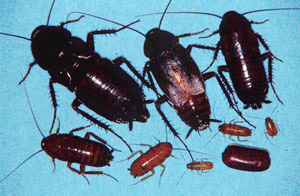
It can often be hard to tell what kind of roach infestation you have in your home. This article will teach you how to identify Oriental Black Cockroaches and step you through how to get rid of them.
How To Get Rid of Oriental Roaches
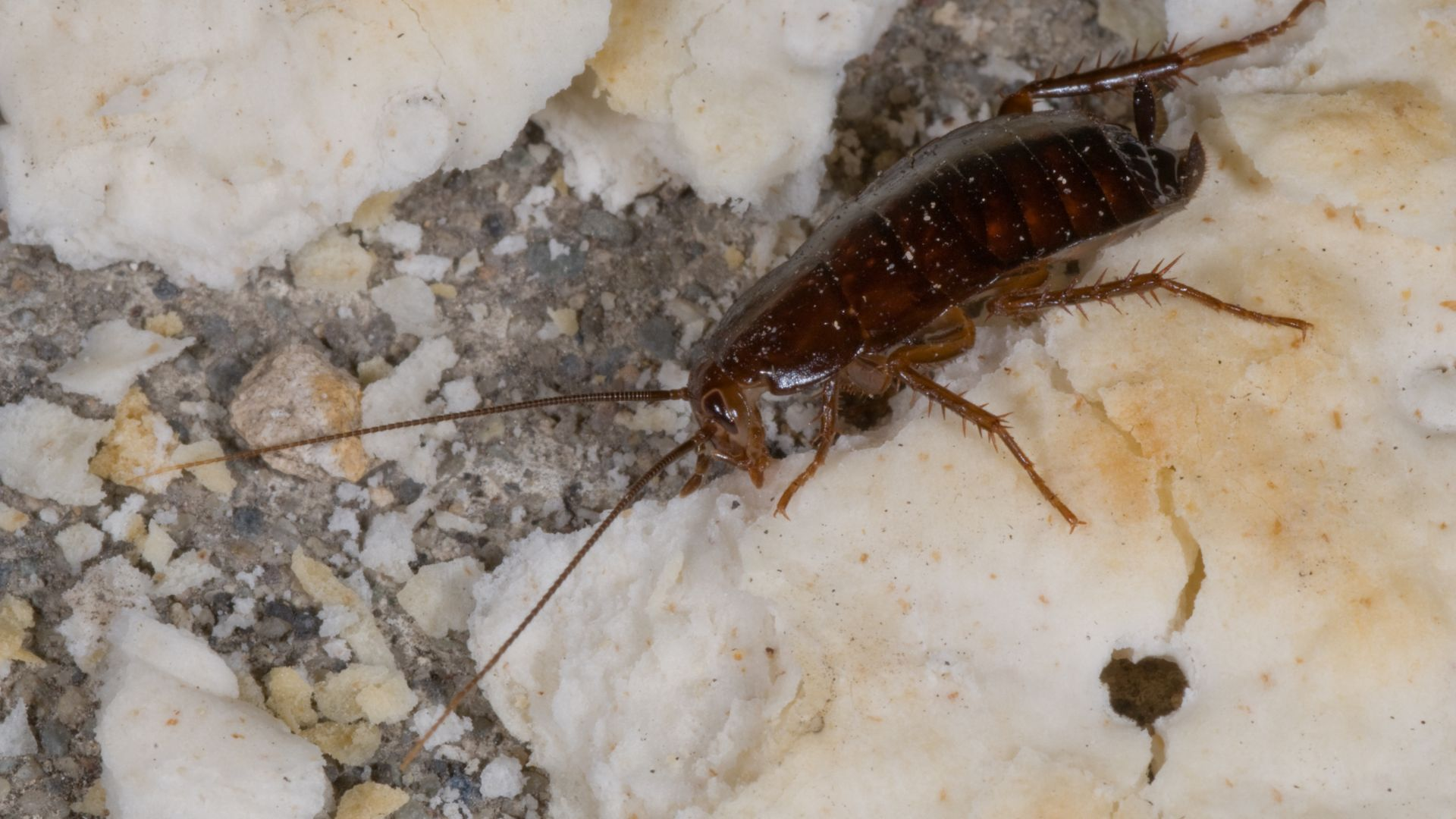
In order to get rid of water bugs (blatta orientalis), you'll need to use sanitation and exclusion strategies. Roaches require food, water, and a safe place to hide. As you begin your roach control treatment plan, remove as much of their food, drink, and shelter as feasible. Following that, you need to choose the roach spray or bait you want to use to get rid of Oriental Roaches.
1. Use Insecticide Sprays to Get Rid of Oriental Roaches
Generally speaking, control measures should concentrate on the outside of the building and points of entry. This control measure is called a "perimeter or barrier" treatment.
You may use concentrated residual sprays for these insects: Avesta CS, Cyper WSP, or Demon WP inside or outside. Spray a 3-6 foot band around the entire house. Spray outside around doors, windows, pipe openings, and dryer vents.
Recommended products that effectively Get Rid of Oriental Roaches are listed below. They would require pump sprayers.
Where To Spray:
-
You may use three residual sprays to get rid of Oriental Roaches: Avesta CS, Cyper WSP, or Demon WP inside or outside. Avesta CS will dry without a visible residue on sprayed surfaces. Cyper WSP and Demon WP will leave a visible powdery residue against surfaces.
-
Spray outside around doors, windows, pipe openings, and dryer vents. Apply also on the inside on the baseboards near the entry points to eliminate your water bug problem.
-
Apply these insecticides on the inside, applying around the plumbing under the sinks and washer and dryer connections.
-
You don't have to spray all the interior baseboards, just the corners, and baseboards inside the garage and basement areas.
2. Use Insecticide Granules to Get Rid of Oriental Roaches:
You may apply a granular insecticide around the base of the house, particularly in areas of pine straw and mulched areas. Bifen L/P is the recommended granular insecticide.
3. Try Granular Insect Baits to Get Rid of Oriental Roaches:
Insects baits like Invict Xpress Granular Bait or Intice Perimeter Bait can be used indoors, outdoors, or in turf areas. Invict Xpress has multiple food attractants to attract not only the Oriental Roach but also Crickets, some Ants, Silverfish, Earwigs, and Firebrats.
Application:
You may apply Bifen LP Granules around the base of the house, particularly in pine straw and mulched areas, and or Intice Perimeter Bait as supplemental treatments.
Large Black cockroaches can enter your home from the attic area, due to trees that overhang the attic or gutters that are not clean. In this situation, using baits like Intice insect baits will give you excellent results in getting rid of Oriental cockroaches.
Remove dead roaches to ensure a clean and sanitary environment. You may also try sticky traps to eliminate the immediate problem, but without baits, granules, or insecticide spray, the issue will likely return.
Key Takeaway
Because Oriental cockroaches can be found both indoors and out, we recommend thorough structure treatment both on the interior and exterior perimeter of your home.
Retreatment
The residual insecticides: Avesta CS Cyper WSP, and Demon WP as well as the residual granules, Bifen LP Granules should be repeated every three months during the season. The top recommendation to get rid of Oriental Cockroaches is Avesta CS.
Avesta CS has an improved encapsulated formula to cause it to bond to surfaces better and holds up under ultraviolet light and rain longer, leaving you with much better chances of reducing and eliminating Oriental cockroach populations.
The Invict Xpress Granular, Intice Perimeter lasts about 6 months, free from rain. D-Fense Dust lasts from 6 months to a year, if free from rain.
Oriental Roach Identification
The Oriental cockroach is shiny black and is about 1.25 inches long.
Dark Brown Roaches
Oriental cockroaches have wings, but the male or female roach can not fly. The total length for the female is 1 ¼" and 1" for the male. The adult females have small nonfunctional wings while the adult males have wings that cover about ¾ of the abdomen. Neither the female nor male can fly. Adult water bugs are very dark brown or black.
Oriental Cockroach Diet
The Oriental roach eats decayed organic matter in mulch piles and rubbish. This cockroach prefers starchy food and builds up populations around garbage cans. Most of their water sources come through their food and the moisture around them.
Diseases That Oriental Roaches Carry
Since Oriental cockroaches will eat decayed matter like decaying plants and live in unsanitary conditions, they can carry bacteria over your countertops, plates, and utensils. It is crucial to know how to get rid of oriental cockroaches when they appear in your home, as they can spread e. Coli, salmonella, dysentery, and cause food poisoning,
Biology of Oriental Roaches
Adult female Oriental cockroaches produce an average of 8 egg Capsules, containing 16 eggs in each, from spring to mid-summer. Unlike other urban cockroaches, the Oriental roach produces only one generation per year, when temperatures are cool.

The female will carry the egg capsule (irregularly shaped, black, 3/8" long, and 1/4"wide), for around 30 hours and then drops or attaches it in a protected area, near a food supply. The eggs hatch in about 60 days under warm conditions. At least 75% of the eggs must hatch to open the capsule.
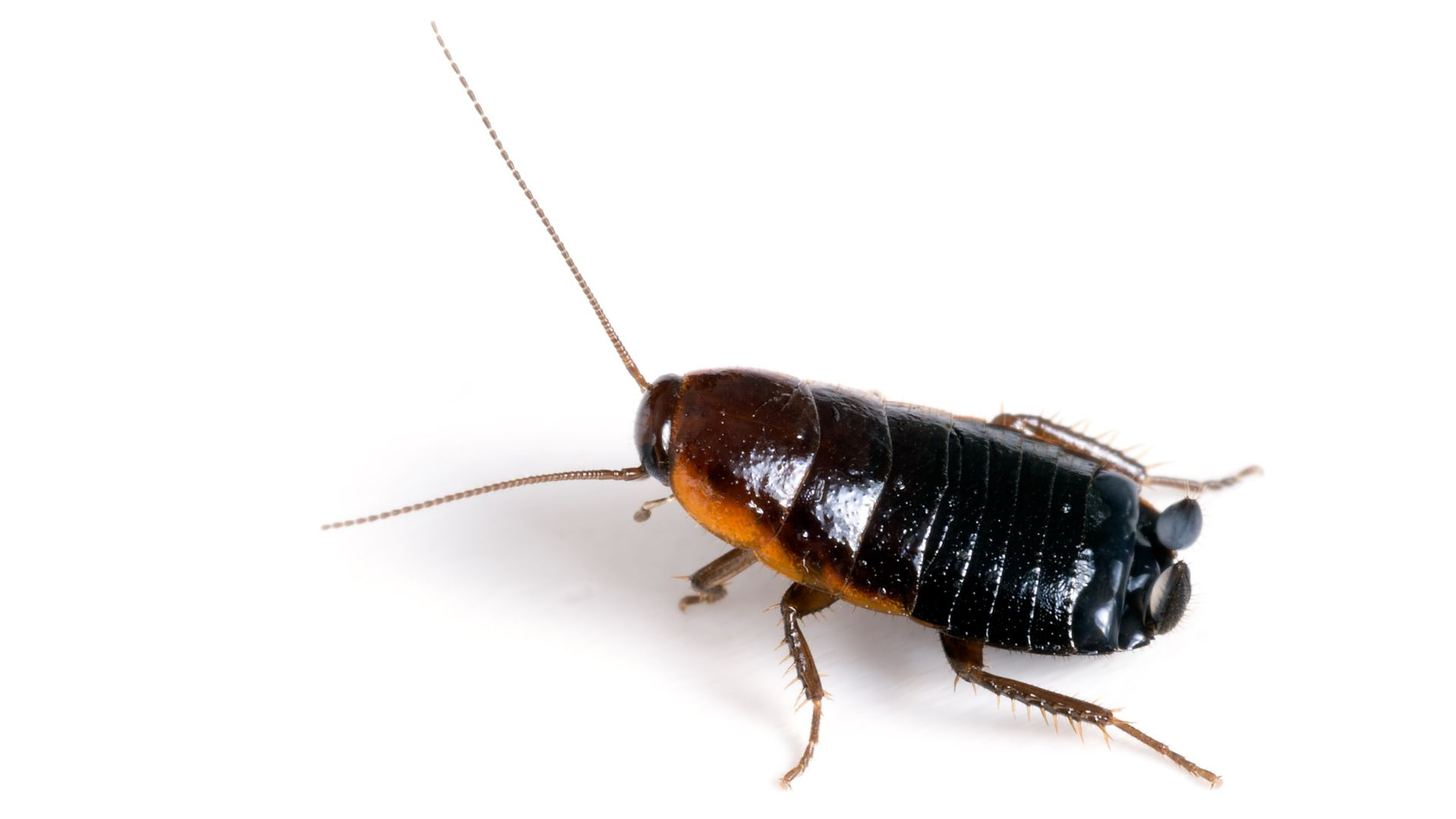
Life Cycle of Oriental Cockroaches
The young water bug will become an adult in 6-12 months. Nymphs(young) are active from about March through much of the summer. During this period, they molt seven to ten times and are reddish-brown to black, except in the first stage, when they are pale tan.
The older brown Oriental cockroach nymphs are very difficult to distinguish from the American cockroaches, particularly, the nymphs. This type of roach will have a seasonal cycle in its development. Oriental cockroaches turn into adults during the spring and early summer, dwindling in numbers by the late summer/early fall.
Nymphs(young) are active from about March through much of the summer. You only find adult Oriental roaches in early spring. By late spring, nymphs are abundant. As nymphal numbers increase, the adults die off, and by August, any adults are new ones. By fall, almost the entire population consists of adults.
How Oriental Roaches Enter Your Home
Oriental cockroaches frequently live in floor drains that drain directly outside; they use these drains are also used as entrances to homes. Oriental roaches may enter your house in search of food. During times of drought, there may be a movement towards the inside of the home in search of damp locations, but generally speaking, they are found outdoors during the warmer months.
They may also move inside if it is unseasonably cold. Oriental cockroaches congregate and often move inside in large numbers, a residual perimeter treatment is recommended for control.
Tell-Tale Signs of an Oriental Cockroach Infestation
The three easiest ways to tell if you have an oriental cockroach infestation in your home is: Smell, sightings, and scattered egg capsules.
-
Smell: If you have an oriental cockroach infestation, you will likely be able to smell their distinct musty odor. These black roaches secrete pungent chemicals in order to communicate.
-
Sightings: In the warmer months, you may spot oriental cockroaches near damp places, sewers, sewer pipes, leaky pipes, storm drains, moist gutters, drains, or moist drains. If you spot one oriental cockroach, the bad news is there are likely hundreds more nearby.
-
Egg Capsules: You will notice small brown or red egg cases scattered around the site of an Oriental Cockroach infestation. The water bugs' egg cases range from 8 to 10 mm in length.
How to Prevent Oriental Cockroaches
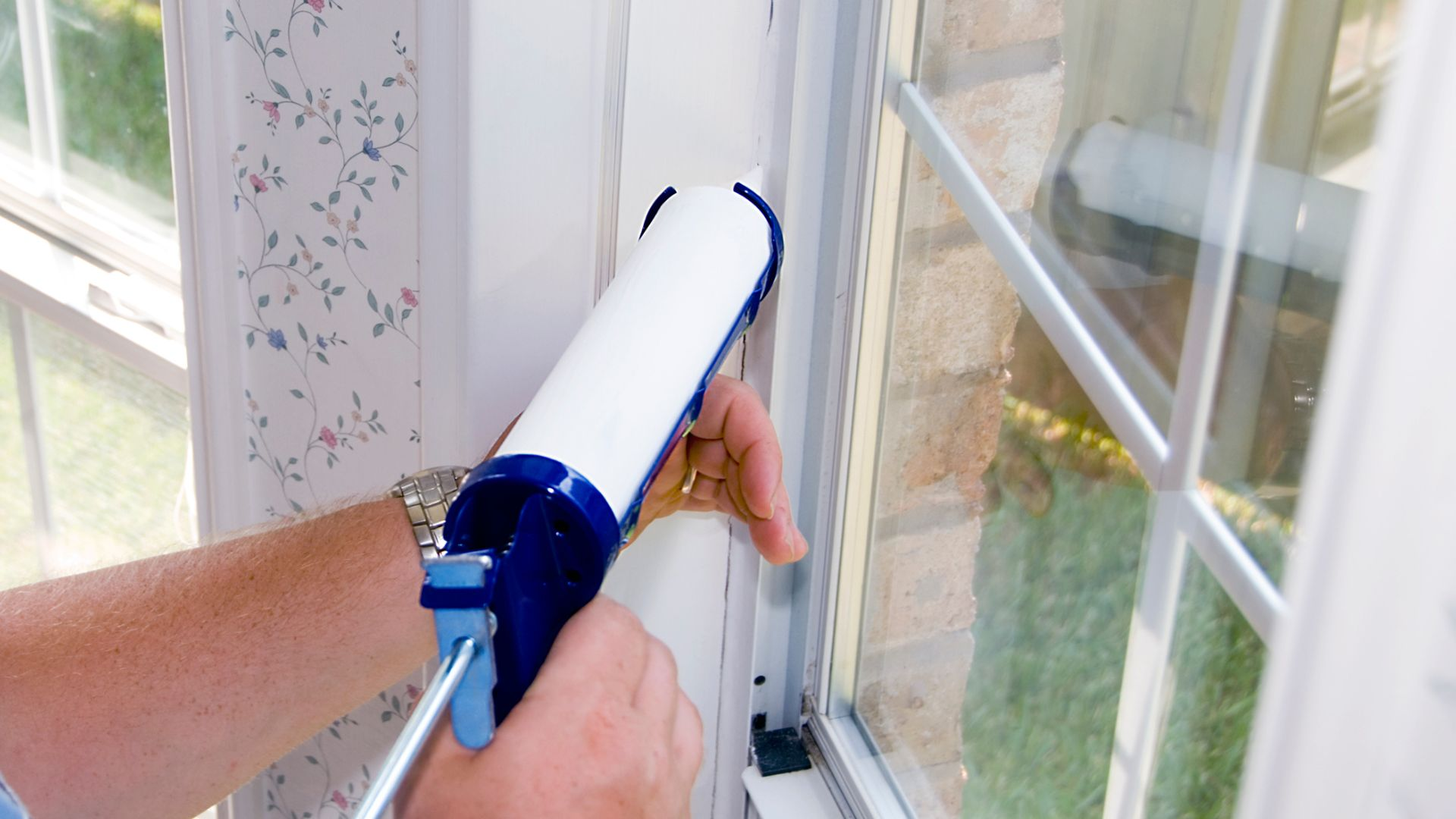
You'll want to make sure Oriental cockroaches don't come back once you've gotten rid of them. The following are some measures you should take to accomplish this:
-
Caulk all penetrations through ground-level walls.
-
Caulk any openings around doors, windows, water pipes, and baseboards that cockroaches might utilize to gain access to your house.
-
Stop water leaks, screen equipment overflow drains, and take overflow water away from buildings; keep drain traps full or capped to prevent easy access. Remove standing water.
-
Basements (a favorite hiding place for Oriental cockroaches) should be well-ventilated and free of leaks.
-
Remove rotting leaves from window wells.
-
Move garbage cans out of an oriental roach's preferred moist habitat, and keep any rubbish away from your home's foundation.
-
Ventilate moist spaces.
-
Reduce moisture in your home or attic with a dehumidifier.
-
Cover your windows, floor drains, and vents with mesh screens.
-
If you have an active black roach infestation, food should not be left out overnight.
How to Get Rid of Oriental Cockroaches
Identifying & Eliminating Oriental Roach & Black Cockroaches in Your Home
Oriental Roaches (Blatta orientalis) are commonly called "water bugs" or "black cockroaches." They live in damp locations such as basements and around floor drains; they are associated with water. Outside, they live near foundations, crawlspaces, yards, and retaining walls. They feed on filth and decaying matter
Oriental Roach Identification
- The Oriental cockroach is shiny black and is about 1.25 inches long.
- They have wings, but the male or female roach can not fly. The total length for the female is 1 ¼" and 1" for the male. The females have small nonfunctional wings while the males have wings that cover about ¾ of the abdomen, neither the female nor male can fly. Adults are very dark brown or black.

(Photo by Jim Kalisch, UNL Dept. of Entomology)
How To Get Rid of Oriental Roaches
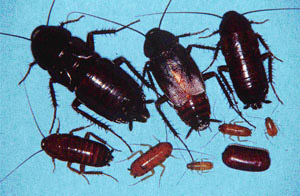
How Oriental Roaches Enter Your Home
These cockroaches frequently live in floor drains that drain directly outside; they use these drains are also used as entrances to homes. Oriental roaches may enter your house in search of food. During times of drought, there may be a movement towards the inside of the home, but generally speaking, they are found outdoors during the warmer months. They may also move inside if it is unseasonably cold. Oriental roaches often move inside in large numbers, a residual perimeter treatment is recommended for control.
We recommend that you practice good exclusion habits.
Outdoor Building Treatment and Points of Entry
Generally speaking, control measures should concentrate on the outside of the building and points of entry. This control measure is called a "perimeter or barrier" treatment.
You may use concentrated residual sprays: Avesta CS, Cyper WSP, or Demon WP inside or outside. Spray a 3-6 foot band around the entire house. Spray outside around doors, windows, pipe openings, and dryer vents.
Recommended products are in the table below. They would require pump sprayers.
Where To Spray:
- You may use three residual sprays: Avesta CS, Cyper WSP, or Demon WP inside or outside. Avesta CS will dry without a visible residue on sprayed surfaces. Cyper WSP and Demon WP will leave a visible powdery residue against surfaces.
- Spray outside around doors, windows, pipe openings, and dryer vents. Apply also on the inside on the baseboards near the entry pts.
- Apply these insecticides on the inside, applying around the plumbing under the sinks and washer and dryer connections.
- You don't have to spray all the interior baseboards, just the corners, and baseboards inside the garage and basement areas.
Additional Treatments
Insecticide Granulars: You may apply granular around the base of the house, particularly in areas of pine straw and mulched areas. Bifen Lp is the recommended insecticide granular.
Insects baits like Invict Xpress Granular Bait or Intice Perimeter Bait can be used indoors, outdoors, or in turf areas. Invict Xpress has multiple food attractants to attract not only the Australian Roach but also Crickets, some Ants, Silverfish, Earwigs, and Firebrats.
Application:
You may apply Bifen LP Granules around the base of the house, particularly in pine straw and mulched areas, and or Intice Perimeter Bait as supplemental treatments. If you have these larger cockroaches entering inside your home from the attic area (due to trees that overhang the attic or gutters that are not clean) using baits like Intice insect baits, will give you excellent results.
Pest Control Products To Use For Oriental Cockroaches
Key Takeaway
Because Oriental Roaches can be found both indoors and out thorough treatment of structure on the inside and on the exterior perimeter is recommended.
Retreatment
The residual insecticides: Avesta CS Cyper WSP, and Demon WP as well as the residual granular, Bifen LP Granules should be repeated every three months during the season. The top recommendation is Avesta CS. It has an improved encapsulated formula to cause it to bond to surfaces better and holds up under ultraviolet light and rain longer.
The Invict Xpress Granular, Intice Perimter last about 6 months, free from rain. D-Fense Dust lasts from 6 months to a year, if free from rain.
Oriental Cockroach Diet
The Oriental roach eats decayed organic matter in mulch piles and rubbish. This cockroach prefers starchy food and builds up populations around garbage cans. Most of their water sources come through their food and the moisture around them.
Diseases Oriental Roaches Carry
Since Oriental roaches will eat decayed matter and live in unsanitary conditions, they can carry bacteria over your countertops, plates, and utensils. They can spread e. Coli, salmonella, dysentery, and cause food poisoning.
Biology of Oriental Roaches

Females produce an average of 8 egg Capsules, containing 16 eggs in each, from spring to mid-summer. Unlike other urban cockroaches, the Oriental roach produces only one generation per year, where temperatures are cool. The female will carry the egg capsule(irregularly shaped, black,3/8" long, and 1/4"wide), for around 30 hours and then drops or attaches it in a protected area, near a food supply. The eggs hatch in about 60 days under warm conditions. At least 75% of the eggs must hatch to open the capsule.
The young become adults in 6-12 months. Nymphs(young) are active from about March through much of the summer. During this period, they molt seven to ten times and are reddish-brown to black, except in the first stage, when they are pale tan.
The older brown Oriental cockroach nymphs are very difficult to distinguish from the American cockroach nymphs. This type of roach will have a seasonal cycle in its development. Oriental roaches peak to adults during the spring and early summer, dwindling in numbers by the late summer/early fall.
Nymphs(young) are active from about March through much of the summer. You only find adult Oriental roaches in early spring. By late spring, nymphs are abundant. As nymphal numbers increase, the adults die off, and by August, any adults are new ones. By fall, almost the entire population consists of adults.
Top picture by Daniel R. Suiter, Univ. Of Ga.
Prevent Oriental Cockroaches
-
Caulk all penetrations through ground level walls.
-
Stop water leaks, screen equipment overflow drains, and take overflow water away from buildings; keep drain traps full or capped.
-
Remove rotting leaves from window wells.
-
Move garbage cans out of preferred moist habitat.
-
Ventilate moist spaces.
Written by our resident pest control expert Ken Martin.




